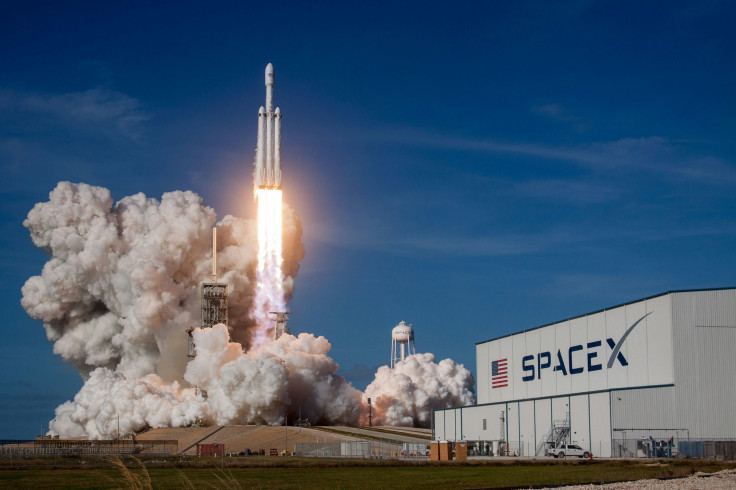SpaceX in Trouble? Inside NASA's Desperate Artemis 3 Gamble to Outrun China to the Moon
SpaceX faces pressure as NASA eyes backup plans for Moon landing

NASA has raised fresh concerns over SpaceX's progress on its Artemis 3 lunar-landing mission, with officials confirming that the company is falling behind schedule on the development of its Starship Human Landing System (HLS).
The delays have prompted the agency to reopen parts of the contract, signalling that it may seek additional partners to ensure the United States returns astronauts to the Moon before China's competing space programme achieves the same milestone.
The Artemis 3 mission, originally planned for 2027, is now expected to be pushed back to 2028 as NASA reconsiders its reliance on SpaceX for the crewed lunar landing.
The decision marks a pivotal moment in the agency's multi-billion-dollar effort to re-establish a human presence on the Moon under the Artemis programme.
NASA Chief Admits SpaceX Is 'Behind Schedule'
Speaking during a recent press briefing, NASA's acting administrator Sean Duffy confirmed that SpaceX is facing significant development setbacks. 'The problem is, they're behind,' Duffy said, referring to the company's Starship HLS progress.
SpaceX was awarded a $2.89 billion (£2.15 billion) contract to build the lander that will ferry astronauts from lunar orbit to the surface. The vehicle is a modified version of the company's fully reusable Starship rocket, which has seen a series of test flights from its Boca Chica facility in Texas.
While SpaceX has achieved several successful launches and landings, the complex refuelling operations required for a lunar mission have yet to be demonstrated.
According to the same report by Space.com, NASA officials have warned that SpaceX's schedule delays could affect the Artemis 3 timeline, as key development milestones for the Starship lunar lander remain incomplete.
The agency's growing concern centres on whether SpaceX can meet the schedule needed to support a human landing within the next three years.
We are in a race against China so we need the best companies to operate at a speed that gets us to the Moon FIRST.
— NASA Acting Administrator Sean Duffy (@SecDuffyNASA) October 20, 2025
SpaceX has the contract to build the HLS which will get U.S. astronauts there on Artemis III.
But, competition and innovation are the keys to our dominance in... pic.twitter.com/dAo0so5qqZ
NASA Reopens Lander Contract in Strategic Move
NASA has taken the unusual step of reopening the Artemis 3 lander contract to new bidders, allowing companies such as Jeff Bezos's Blue Origin to propose alternative systems or faster delivery schedules.
The move aims to maintain flexibility and reduce risk without sidelining SpaceX, which remains a key partner.
Officials said the decision is designed to ensure backup options as Artemis 3 advances toward its goal of establishing a sustainable human presence at the Moon's south pole.
Race Against China Adds Pressure to NASA Timeline
Behind the technical challenges lies a broader geopolitical factor. China's space agency has announced plans to conduct its own crewed Moon landing before 2030, intensifying pressure on NASA to deliver Artemis 3 ahead of schedule.
As reported by Space.com, NASA is now apparently eyeing a later launch date of 2028 for Artemis 3, reflecting internal concerns over whether the mission can meet its original 2027 target.
US officials, including former NASA Administrator Bill Nelson, have previously warned that China's rapid progress could allow it to 'claim resource-rich areas' of the lunar surface.
With the race for lunar dominance accelerating, Washington sees the Artemis programme as vital to maintaining US leadership in space exploration.
The competition has placed NASA in what some analysts describe as a 'high-stakes race' against time.
The agency must now balance engineering realities with political expectations, particularly as Congress and international partners monitor the programme's cost and pace.
SpaceX Pushes Ahead Despite Scrutiny
Despite mounting pressure, SpaceX continues to test and refine its Starship system. Recent flights have demonstrated improvements in re-entry control and engine performance, although several prototypes were lost in earlier trials.
The company's next phase involves proving the ability to refuel Starship in Earth orbit — a critical requirement for any lunar landing.
While SpaceX has not directly commented on NASA's decision to reopen bidding, industry observers note that the firm remains central to the Artemis architecture.
Its progress over the coming months will be crucial in determining whether NASA's ambitious lunar timeline can be met and whether SpaceX can retain its position at the heart of America's return to the Moon.
© Copyright IBTimes 2025. All rights reserved.





















